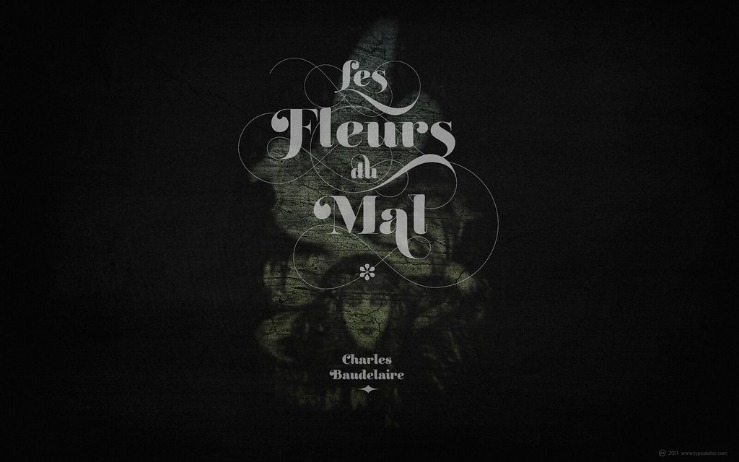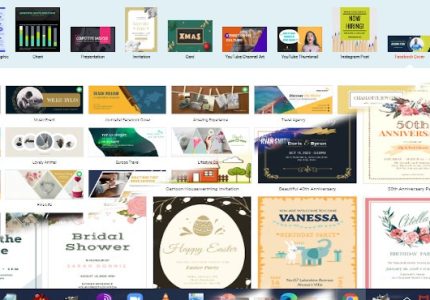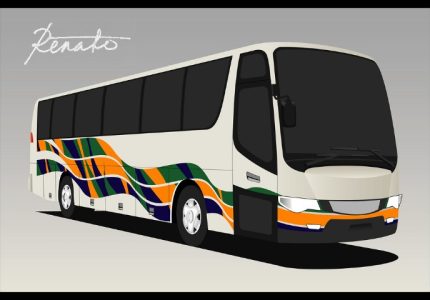Overview of Top Graphic Design Programs
Choosing the best graphic design program depends on your specific needs and skill level, but there are several top contenders widely recognized in the industry. Adobe Creative Cloud, particularly Adobe Photoshop and Illustrator, remains the industry standard for professional graphic design, offering powerful tools for creating and editing images and vector graphics. Affinity Designer and Affinity Photo provide a cost-effective alternative with robust features suitable for both beginners and professionals. CorelDRAW is another popular option known for its intuitive interface and versatile vector graphic capabilities. For those interested in free software, GIMP is a highly capable open-source program that can handle a variety of design tasks. Additionally, programs like Canva offer user-friendly, web-based platforms ideal for quick designs and social media graphics. Each of these programs offers unique features to cater to different creative needs, making them some of the top choices for aspiring and professional graphic designers alike.
Adobe Photoshop
Adobe Photoshop is widely regarded as one of the best graphic design programs available today. Renowned for its powerful tools and versatile features, it enables designers to create stunning visuals, manipulate images, and bring their creative ideas to life. Whether you’re a beginner or a professional, Photoshop offers a comprehensive platform for all your graphic design needs.
Features and Capabilities
Adobe Photoshop is widely regarded as one of the best graphic design programs due to its extensive features and versatile capabilities. It provides designers with powerful tools to create, edit, and enhance images and digital artwork with precision and creativity.
- Advanced photo retouching and editing tools
- Wide range of brushes and drawing tools for digital painting
- Layer-based editing for complex compositions
- Selection tools for precise image manipulation
- Support for numerous file formats, including PSD, JPEG, PNG, and TIFF
- Smart objects and filters for non-destructive editing
- Integration with other Adobe Creative Cloud applications
- Automation features and customizable actions to streamline workflows
- 3D editing capabilities and text effects
- Extensive plugin support for additional effects and functionalities
Strengths and Use Cases
Adobe Photoshop is widely regarded as one of the best graphic design programs due to its powerful features and versatility. It offers a comprehensive suite of tools for editing images, creating digital artwork, and designing visuals with precision and creativity.
Its strengths include advanced photo editing capabilities, numerous filters and effects, layered editing for complex compositions, and a vast library of brushes and textures. Photoshop also supports high-resolution projects, making it suitable for both print and digital media.
Use cases for Adobe Photoshop encompass photo retouching, image manipulation, digital painting, UI/UX design, and creating marketing materials such as banners, posters, and social media graphics. Its extensive plugins and integration options further enhance its utility for professional designers and artists alike.
Pricing and Subscription Options
Adobe Photoshop is widely regarded as one of the best graphic design programs available, offering powerful tools and features for both professionals and beginners. Its extensive editing capabilities make it a top choice for photo manipulation, digital art, and visual design projects.
In terms of pricing and subscription options, Adobe Photoshop is available through the Adobe Creative Cloud subscription service. Users can choose from various plans, including the Photography plan which combines Photoshop and Lightroom at a lower price, or the All Apps plan that grants access to the entire Adobe suite. The monthly subscription typically starts around twenty dollars, with discounts available for students, teachers, and annual commitments. Adobe also offers a free trial period so users can test the software before committing to a subscription.
Adobe Illustrator
Adobe Illustrator is a leading graphic design program renowned for its powerful vector graphics capabilities. It offers professionals and enthusiasts the tools needed to create stunning logos, illustrations, and complex artwork with precision and flexibility. As part of Adobe’s Creative Cloud suite, Illustrator seamlessly integrates with other design and creative applications, making it a top choice for graphic designers worldwide.
Features and Capabilities
Adobe Illustrator is widely regarded as one of the best graphic design programs available, known for its powerful features and versatile capabilities. It offers a comprehensive set of tools for creating detailed vector graphics, illustrations, logos, and typography, making it an essential software for professional designers. The program supports advanced drawing tools, such as the Pen tool, brushes, and shape builder, which enable precise and creative design work.
Illustrator’s capabilities include scalable vector graphics that maintain quality at any size, perfect for branding and print projects. Its seamless integration with Adobe Creative Cloud allows for efficient workflow and easy sharing of assets across different applications. The software also provides extensive typographic features, gradient meshes, and effects to enhance visual appeal. Additionally, Illustrator offers customization options, reusable symbols, and advanced path editing, empowering designers to produce complex, high-quality artwork with ease.
Strengths and Use Cases
Adobe Illustrator is widely considered one of the best graphic design programs due to its powerful vector editing capabilities and versatility. It allows designers to create scalable graphics without losing quality, making it ideal for logos, icons, and detailed illustrations. The program offers a comprehensive set of tools and features that facilitate precise artwork creation, customization, and complex design workflows.
One of its main strengths is its ability to produce sharp, clean images that can be resized seamlessly, which is essential for branding and print materials. Illustrator also integrates seamlessly with other Adobe Creative Cloud applications, enhancing productivity and enabling smooth project workflows. Its extensive library of brushes, effects, and typographic tools gives designers creative freedom and flexibility.
Use cases for Adobe Illustrator include logo design, branding assets, detailed illustrations, infographics, product packaging, and user interface design. Its vector-based approach makes it suitable for any project requiring high-quality, scalable graphics, making it a top choice for professional graphic designers worldwide.
Pricing and Subscription Options
Adobe Illustrator is widely regarded as one of the best graphic design programs available due to its powerful vector editing tools and versatility. It is a professional-grade software used by artists, designers, and illustrators worldwide to create stunning visuals, logos, icons, and complex illustrations.
Regarding pricing, Adobe Illustrator is offered through a subscription-based model as part of Adobe Creative Cloud. The standard plan for individual users typically costs around $20.99 per month, providing access to the latest version of Illustrator and regular updates. Adobe also offers discounted plans for students, teachers, and teams, which can significantly reduce costs.
Subscription options include a single-app plan focused solely on Illustrator or an all-apps plan that grants access to the entire Adobe Creative Cloud suite. Adobe also provides a free trial period, usually lasting 7 days, allowing users to explore the software’s features before committing to a subscription.
CorelDRAW
CorelDRAW is a powerful and versatile graphic design program widely recognized for its excellent vector illustration capabilities. Known for its user-friendly interface and extensive tools, it allows designers to create detailed logos, layouts, and artwork with precision. Whether you’re a beginner or a professional, CorelDRAW offers a comprehensive suite of features to bring creative ideas to life, making it one of the best graphic design programs available.
Features and Capabilities
CorelDRAW is widely regarded as one of the best graphic design programs available, offering a comprehensive suite of tools tailored for both beginners and professional designers. Its robust features include advanced vector illustration, page layout, photo editing, and typography tools, making it versatile for various design projects. CorelDRAW’s intuitive interface allows users to easily create logos, signs, posters, and detailed artwork with precision and creativity. The program also supports high-quality output, seamless file compatibility, and customization through various plugins and extensions. Overall, CorelDRAW combines powerful capabilities with user-friendly features, positioning it as a top choice in the realm of graphic design software.
Strengths and Use Cases
CorelDRAW is widely recognized as one of the best graphic design programs due to its powerful features and user-friendly interface. It offers a comprehensive set of tools for vector illustration, page layout, photo editing, and typography, making it suitable for both beginners and professional designers. Its versatility allows users to create detailed artwork, branding materials, signage, and marketing assets with ease.
One of CorelDRAW’s key strengths is its robust vector editing capabilities, which enable precise control over shapes and lines, essential for logo design and technical illustrations. It also integrates advanced color management and customization options, allowing for accurate and consistent color application across projects. Additionally, CorelDRAW supports a wide range of file formats, facilitating seamless collaboration and sharing.
Use cases for CorelDRAW include creating logos, posters, banners, packaging designs, technical drawings, and digital illustrations. Its flexibility makes it popular among graphic designers, advertisers, print shops, and small business owners who need a reliable program to produce high-quality visual content efficiently.
Pricing and Subscription Options
CorelDRAW is widely regarded as one of the best graphic design programs due to its powerful features and versatility for both beginners and professionals. It offers a comprehensive suite of tools for vector illustration, layout, photo editing, and typography, making it suitable for a wide range of creative projects. The interface is user-friendly, and it supports a variety of file formats, ensuring seamless compatibility with other design software.
Regarding pricing, CorelDRAW is available through a one-time purchase or a subscription plan. The perpetual license typically costs around $499, providing lifetime access without ongoing payments. Alternatively, the subscription option is more flexible, costing approximately $15 to $35 per month, depending on the plan selected, which includes regular updates and cloud storage. Students, educators, and non-profits may benefit from discounted rates, making it an accessible choice for a diverse user base.
Affinity Designer
Affinity Designer is a professional graphic design software beloved by artists and designers for its powerful features and intuitive interface. Known for its versatility in creating vector and raster artwork, it offers a seamless workflow adaptable to various creative projects. With its affordability and robust tools, Affinity Designer stands out as one of the best graphic design programs available today.
Features and Capabilities
Affinity Designer is widely regarded as one of the best graphic design programs available, offering a comprehensive suite of features and capabilities that cater to both amateur and professional designers. Its intuitive interface and powerful tools make it a versatile choice for creating stunning vector and raster graphics.
- Precise vector and raster design tools for versatile creative workflows
- Responsive and customizable user interface for efficient working experience
- Advanced pen, brush, and shape tools to achieve detailed and complex artwork
- Support for multiple artboards and layers to organize projects effectively
- Non-destructive effects and adjustments for flexible editing
- Extensive color management and gradients to enhance visual appeal
- High-quality export options supporting various formats for different media
- Compatibility across multiple platforms including Windows, macOS, and iPad
- Native support for Adobe Photoshop and Illustrator files for easy collaboration
- Regular updates and responsive customer support to keep the software current and reliable
Strengths and Use Cases
Affinity Designer is a powerful and versatile graphic design program celebrated for its precision and flexibility, making it a top choice among professionals. It offers a seamless experience for creating detailed illustrations, vector artwork, and UI designs with an intuitive interface and a rich set of tools. Its affordability combined with a one-time purchase cost makes it especially appealing to individual designers and small studios.
One of its key strengths is its ability to handle both raster and vector graphics within a single workspace, enabling artists to switch effortlessly between the two. It also features advanced typography tools, extensive support for various file formats, and real-time performance that accelerates creative workflows. Its compatibility across different devices and operating systems enhances collaboration and convenience.
Common use cases for Affinity Designer include logo creation, branding projects, illustrations, concept art, digital painting, and user interface design. Its precision and versatility make it suitable for creating detailed and scalable graphics tailored for print, web, and mobile applications. Overall, Affinity Designer stands out as a comprehensive and cost-effective program for professional-grade graphic design.
Pricing and Subscription Options
Affinity Designer is widely regarded as one of the best graphic design programs available, offering a powerful and versatile platform for creative professionals. It provides a combination of advanced vector and raster design tools, making it suitable for a wide range of projects from branding to digital artwork. The software is praised for its intuitive interface and seamless performance, boosting productivity and creativity.
Regarding pricing, Affinity Designer is available as a one-time purchase rather than a subscription-based model. The cost typically ranges around $49.99 for a perpetual license, with occasional discounts and promotions. This ensures that users can access the full suite of features without ongoing payments, making it a cost-effective choice for individual designers and small studios.
In terms of subscription options, Affinity Designer does not offer any monthly or yearly subscription plans. Instead, you pay upfront for a license, with free updates included within the version purchased. This pay-once model appeals to those seeking long-term access without recurring expenses, providing excellent value for professional and hobbyist designers alike.
Canva
Canva is a popular and user-friendly graphic design platform that offers a wide range of tools and templates for creating stunning visuals. Whether you are a beginner or a professional, Canva provides an intuitive interface to design everything from social media posts to presentations. Its versatility and ease of use make it one of the best graphic design programs available today.
Features and Capabilities
Canva is one of the best graphic design programs, renowned for its user-friendly interface and versatile features that cater to both beginners and professionals. It provides an all-in-one platform for creating stunning visuals effortlessly.
- Intuitive Drag-and-Drop Editor: Allows users to easily customize templates and design elements.
- Extensive Template Library: Offers thousands of professionally designed templates for social media, presentations, posters, and more.
- Stock Photos and Graphics: Access to a vast library of high-quality images, icons, illustrations, and fonts.
- Collaborative Tools: Enables team collaboration with real-time editing and sharing options.
- Design Resize and Animation: Features to resize designs and add animations for engaging visuals.
- Brand Kit and Customization: Allows organizations to upload logos, color palettes, and fonts for brand consistency.
- Export and Sharing Options: Supports downloading in various formats and direct sharing to social media platforms.
With its extensive capabilities, Canva remains a top choice for creating impressive graphics quickly and efficiently without requiring advanced design skills.
Strengths and Use Cases
Canva is a leading graphic design program renowned for its user-friendly interface and versatile features, making it accessible to both beginners and professionals. Its strengths lie in its extensive library of templates, images, fonts, and design elements, allowing users to create high-quality visuals quickly and effortlessly. Canva also offers collaborative tools, enabling teams to work together seamlessly on projects. Additionally, its cloud-based platform ensures that users can access their designs from anywhere, making it convenient for both individual and team workflows.
Use cases for Canva are broad and diverse. It is ideal for creating social media graphics, presentations, posters, flyers, and marketing materials. Small businesses utilize Canva for branding and promotional content, while educators and students use it for instructional visuals and learning materials. Nonprofits and community organizations also benefit from Canva’s simple tools to craft engaging campaigns and event promotions. Overall, Canva’s flexibility and ease of use make it arguably the best graphic design program for a wide range of design needs.
Pricing and Subscription Options
Canva is widely regarded as one of the best graphic design programs, offering a user-friendly interface and versatile tools suitable for both beginners and professionals. Its pricing and subscription options are designed to accommodate different needs and budgets. The free plan provides access to a vast library of templates, images, and basic features, making it ideal for casual users. For more advanced features, Canva Pro is available on a subscription basis, unlocking premium assets, brand kits, resize functionalities, and team collaboration tools. Additionally, Canva for Teams offers enhanced collaboration options for larger groups or organizations. Overall, Canva’s flexible pricing structure makes it a top choice for those seeking an accessible yet powerful graphic design program.
Figma
Figma is a popular, cloud-based graphic design tool that allows users to create, collaborate, and share designs seamlessly. Known for its intuitive interface and real-time collaboration features, it has become a favorite among designers, developers, and teams working on user interfaces, prototypes, and visual designs. Figma’s versatility and accessibility make it an excellent choice for those seeking a powerful and collaborative graphic design program.
Features and Capabilities

Figma is one of the best graphic design programs available today, known for its powerful features and collaborative capabilities. It is a cloud-based design tool that allows teams to work together seamlessly on projects, making it ideal for modern design workflows.
- Real-time collaboration: Multiple users can edit and comment on designs simultaneously, enhancing teamwork and productivity.
- Cross-platform accessibility: Since it’s web-based, Figma works on any operating system with internet access, including Windows, macOS, and Linux.
- Design prototyping: Users can create interactive prototypes within the same platform, streamlining the design-to-development process.
- Version control: Figma automatically saves design history, allowing users to track changes and revert to previous versions easily.
- Component system: Reusable elements and styles facilitate consistency across large projects and simplify updates.
- Plugins and integrations: Supports a wide range of plugins to extend functionality, such as accessibility checks, stock image libraries, and more.
- Developer handoff: Developers can inspect designs directly, view CSS, and export assets without additional tools.
Overall, Figma’s versatility, collaborative features, and ease of use make it an excellent choice for graphic designers looking for a comprehensive program to bring their creative ideas to life.
Strengths and Use Cases
Figma is widely regarded as one of the best graphic design programs due to its collaborative features and versatility. It allows multiple users to work simultaneously on a project, making it ideal for team-based design processes. Its cloud-based platform enables easy access from any device without the need for installations, streamlining workflows and enhancing productivity. Figma’s intuitive interface and extensive plugin ecosystem provide designers with powerful tools for creating everything from UI/UX designs to prototypes.
One of Figma’s key strengths is its real-time collaboration capabilities, which facilitate seamless teamwork and communication. Its vector-based editing tools support highly precise designs, while the easy sharing options allow for straightforward feedback and iteration. Figma also integrates well with other tools and services, making it a flexible choice for diverse design needs.
Use cases for Figma include designing website and mobile app interfaces, creating interactive prototypes, wireframing, and collaborative branding projects. It is especially popular among UI/UX designers for developing user journey maps and testing interface concepts. Its ability to centralize design assets and maintain version control further enhances its utility for designing and iterating on complex projects efficiently.
Pricing and Subscription Options
Figma is widely regarded as one of the best graphic design programs due to its powerful features and collaborative capabilities. It offers a range of pricing and subscription options suitable for individual designers, teams, and organizations. The free plan provides essential features, allowing users to design and prototype with up to three projects and real-time collaboration. For more advanced needs, Figma offers paid plans such as Professional, which includes unlimited files, version history, and more sharing options, and Organization, which provides enterprise-level features like centralized billing and advanced security. These subscription options are flexible, making Figma accessible for various users, from freelance designers to large teams seeking streamlined workflows and robust design tools.
Comparison of Top Graphic Design Programs
Choosing the right graphic design program is essential for unleashing creativity and enhancing productivity. With numerous options available in the market, designers must compare features, usability, and compatibility to find the best fit for their needs. This article explores some of the top graphic design programs, highlighting their strengths and unique features to help you make an informed decision for your creative projects.
Ease of Use
When comparing the top graphic design programs, ease of use is a crucial factor for both beginners and experienced designers. Adobe Photoshop offers extensive features but has a steeper learning curve, making it more suitable for those with prior experience. Adobe Illustrator is powerful for vector graphics but also requires some familiarity with design concepts. Canva stands out for its user-friendly interface, allowing users to create professional designs quickly without much training. CorelDRAW provides a balance of advanced tools and an intuitive workspace, appealing to those looking for ease alongside robust features. Overall, Canva and CorelDRAW tend to be more accessible for new users, while Adobe programs are preferred by professionals willing to invest time in learning complex features.
Versatility and Tools
When comparing top graphic design programs, versatility and available tools play a crucial role in determining the best software for designers. Programs like Adobe Photoshop, Illustrator, and CorelDRAW offer extensive toolsets that cater to various aspects of graphic creation, from photo editing to vector illustrations. Photoshop is renowned for its powerful photo editing capabilities, making it ideal for raster-based artwork, while Illustrator excels in creating scalable vector graphics suitable for logos and branding. CorelDRAW provides a user-friendly interface with a broad range of design tools, making it a strong alternative for both beginners and professionals. Other programs such as Affinity Designer and Canva also offer unique features, with Affinity Designer providing a cost-effective yet versatile vector editing environment, and Canva focusing on ease of use and quick design creation for non-professionals. Ultimately, the best graphic design program depends on the specific needs and skill level of the user, but those with comprehensive toolsets and compatibility across different design tasks tend to be preferred in the industry.
Pricing and Accessibility
When selecting the best graphic design program, it’s important to consider both pricing and accessibility to find a tool that fits your needs and budget. Popular options like Adobe Creative Cloud offer industry-standard features but come with a higher subscription cost, making it more suitable for professionals or serious students. In contrast, programs like Canva and Gravit Designer provide free or affordable versions, making them accessible for beginners or casual users. affordability varies widely, from free tools to premium software costing monthly or annually. Accessibility also depends on platform compatibility, with some programs offering web-based interfaces that work across devices, while others require robust hardware or specific operating systems. Ultimately, the best program balances powerful features with reasonable pricing and ease of access, ensuring users can create without unnecessary barriers.
Platform Compatibility
When comparing top graphic design programs, platform compatibility is a critical factor to consider. Adobe Photoshop and Illustrator are highly regarded for their extensive features and are compatible with both Windows and macOS, making them versatile choices for most users. CorelDRAW primarily operates on Windows, but recent versions have introduced a Mac-compatible option. Affinity Designer and Affinity Photo provide robust performance on both macOS and Windows, offering a more affordable alternative without sacrificing quality. Canva, as a web-based platform, ensures accessibility across any device with internet access, making it ideal for collaboration and quick projects. Ultimately, choosing the best graphic design program depends on your specific platform needs and work environment, with each option offering distinct advantages for different users.
Choosing the Best Program for Your Needs
Selecting the best graphic design program for your needs can greatly enhance your creative projects and streamline your workflow. With numerous options available on the market, it’s important to consider features, ease of use, and compatibility to find the ideal software that aligns with your skills and goals. Making an informed choice will empower you to produce professional-quality designs and bring your ideas to life efficiently.
Professional vs. Beginner Use
When selecting the best graphic design program, it’s important to consider your skill level and specific project requirements. For beginners, user-friendly interfaces and straightforward tools are essential to facilitate learning and creativity without feeling overwhelmed. Programs like Canva or Adobe Spark are ideal for those just starting out, offering easy-to-use features and templates.
Professional designers, on the other hand, often require advanced tools that allow for intricate editing, design precision, and flexibility. Adobe Photoshop, Illustrator, and InDesign are industry standards that provide comprehensive features suitable for complex projects, branding, and high-quality output. Choosing between these programs depends on your experience level and the complexity of your design tasks, ensuring you have the right tools to bring your ideas to life effectively.
Type of Projects
Selecting the best graphic design program depends significantly on the type of projects you plan to create. Different projects demand specific tools and features that cater to your creative needs.
- Vector Illustration and Logo Design: Programs like Adobe Illustrator or CorelDRAW are ideal for creating scalable graphics and logos with precision.
- Photo Editing and Retouching: Adobe Photoshop is the industry standard for editing images, retouching photos, and creating detailed graphics.
- Digital Art and Painting: Procreate and Krita offer excellent tools for digital painting, sketching, and concept art.
- UI/UX Design: Figma and Adobe XD are perfect for designing user interfaces and prototypes with collaborative features.
- Print Design and Layout: Adobe InDesign is suited for designing brochures, magazines, and other print materials.
- Assess your project requirements and choose a program that provides the necessary tools and features.
- Consider your proficiency level and select software with an intuitive interface if you’re a beginner.
- Evaluate compatibility with your operating system and collaboration features for team projects.
- Explore trial versions or free alternatives to determine which program best fits your workflow.
- Ensure the program supports your preferred file formats for seamless integration with other tools.
Budget Considerations
Choosing the best graphic design program for your needs involves evaluating both your specific requirements and your budget. It’s important to find software that offers the right balance of features, usability, and affordability to help you create high-quality designs efficiently.
- Identify Your Needs: Determine if you require software primarily for illustration, photo editing, layout design, or a combination of these. Different programs excel in different areas, so knowing your focus will guide your choice.
- Evaluate Features: Look for features that match your skill level and project demands. For beginners, user-friendly interfaces and tutorials are beneficial, whereas advanced users may need extensive tools and customization options.
- Consider Budget: Graphic design programs range from free to high-cost subscriptions. Free options like GIMP or Canva are great for beginners or casual projects, while professional tools like Adobe Photoshop or Illustrator come with subscription fees but offer more comprehensive features.
- Trial Versions: Take advantage of free trials to test out software before committing financially. This helps you assess if the program’s workflow suits your style and needs.
- Compatibility and System Requirements: Ensure the software is compatible with your operating system and device specifications to avoid performance issues.
- Community and Support: Access to tutorials, forums, and customer support can significantly impact your learning curve and problem-solving efficiency.





